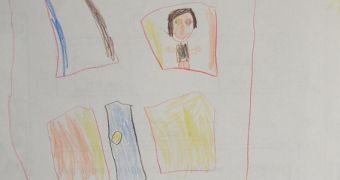Investigators with the Bob Shapell School of Social Work at the Tel Aviv University (TAU) in Israel have determined in a new study that investigating child abuse can be done more efficiently by having children create drawings depicting the experiences they went through. This may oftentimes be less traumatic than having to remember and retell the whole story, the team led by Dr. Carmit Katz argues.
In a series of experiments conducted at TAU, researchers compared the quality of information obtained from children who were asked to draw about the events they went to to data collected from abuse victims who underwent standard questioning techniques. Full details of the results appear in the latest issue of the journal Child Abuse and Neglect, PsychCentral reports.
The investigation adhered to the International Evidence-Based Investigative Interviewing of Children protocol when questioning abuse victims. A total of 125 randomly selected children – ages 5 to 14 – were analyzed, all of whom had been alleged victims of sexual abuse. Half of participants were allowed to draw, while the other underwent regular questioning techniques.
“The act of drawing was not only an empowering experience for these children. We also found it to be forensically more effective in eliciting richer testimonies in child abuse cases. We had no idea the gap would be so great between those who drew and those who weren’t given this option,” Katz explains.

 14 DAY TRIAL //
14 DAY TRIAL //